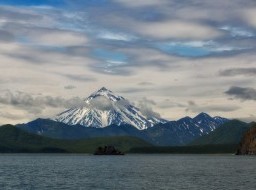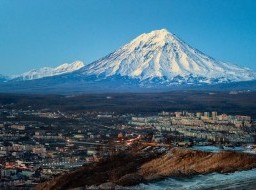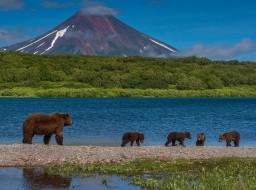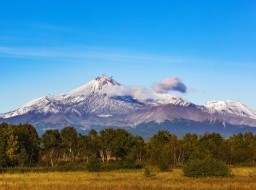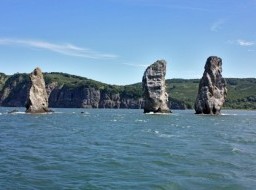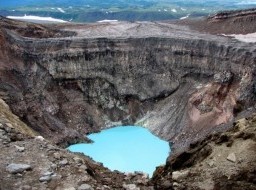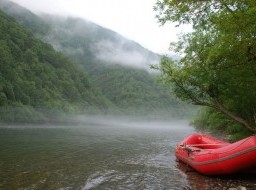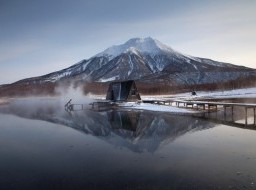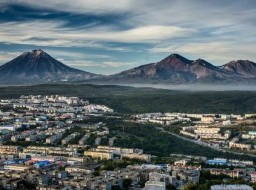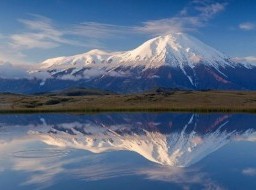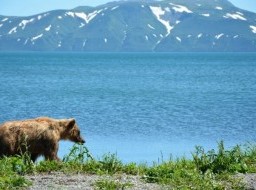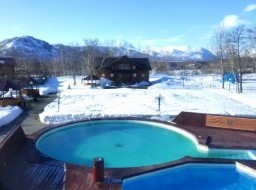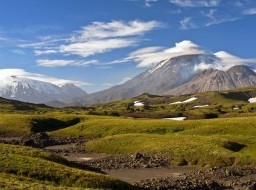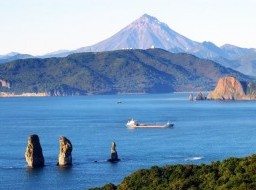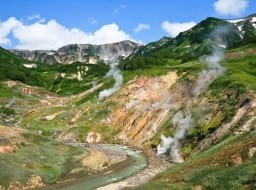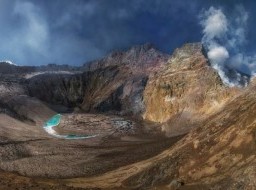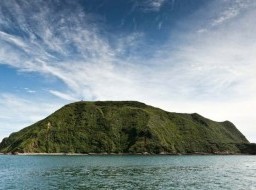Petropavlovsk - Kamchatsky
Petropavlovsk-Kamchatsky is a city and a sea port located in the Far East of Russia, the capital of Kamchatka krai. It is a base of the Russian Pacific Fleet. The population of Petropavlovsk-Kamchatsky is about 181,000 (2015), the area - 362 sq. km. Petropavlovsk-Kamchatsky historyRussian Cossacks discovered the Kamchatka Peninsula in the middle of the 17th century, and finally annexed it to the Russian kingdom in 1697. They founded a fort in Avacha Bay, near the village of Aushin. October 17, 1740 is the official date of foundation of Petropavlovsk. It happened during the second Kamchatka expedition headed by Vitus Bering and Alexey Chirikov (1733-1743). The ships were called “St. Apostle Peter” and “St. Apostle Paul”, so the new settlement received the name Petropavlov. In 1779, the harbor of Petropavlov was visited by two British military ships “Discovery” and “Resolution” during the second round-the-world expedition of James Cook. Charles Clerke, who lead the expedition after Cook’s death was buried in this harbor. In 1812, Petropavlov received the status of a town. On December 2, 1849, the Kamchatka region was formed, with the governor and the center - Petropavlov port. In 1854, during the Crimean War, Petropavlovsk garrison repulsed the attack of the English-French fleet. The monuments dedicated to this event are located on the slopes of Nikolskaya sopka, in the historic center of the city. In 1913, the coat of arms of the town was approved. In 1924, Petropavlovsk was renamed Petropavlovsk-Kamchatsky to differ from the city of Petropavlovsk in Kazakhstan. June 15, 1932, the Kamchatka Branch of the Pacific Research Institute of Fisheries and Oceanography was organized. April 21, 1933, the first professional theater was opened in the city. The local population noticeably increased in the 1930s-1940s because of the construction of a ship repair yard, mechanical plant and other industrial facilities. August 31, 1958, Kamchatka Pedagogical Institute was officially opened. It was the the first institution of higher education on the Kamchatka Peninsula. In 1989, the city’s population reached 300,000 people. In the 1990s, there was a massive outflow of population, caused by unemployment and falling living standards. In 1993, the original coat of arms was returned to the city. November 3, 2011, Petropavlovsk-Kamchatsky received the honorary title “The City of Military Glory”. Petropavlovsk-Kamchatsky featuresPetropavlovsk-Kamchatsky is one of the oldest cities in the Far East of Russia. The city is located in the south-eastern part of the Kamchatka Peninsula, on Avachin Bay of the Pacific Ocean, about 8,200 km from Moscow. Petropavlovsk-Kamchatsky is the most eastern city of the entire northern hemisphere with a population of more than 100,000 people. The level difference in the city is about 514 meters. The climate is temperate, with some features of sea climate and monsoon climate. It is mild, with snowy winters, cold springs, cool summers, and relatively warm autumns. The average temperature in February (the coldest month) is minus 6.4 degrees Celsius, in August (the warmest month) - plus 15.1 degrees Celsius. The eastern coast of Kamchatka, Japan, and the Kuril Islands are the most seismically active place on Earth. Tourism is becoming an increasingly important part of the local economy. Petropavlovsk-Kamchatsky travel agencies offer trips to hot springs and volcanoes, helicopter tours to the famous Valley of Geysers and Uzon Volcano, horse rides as well as sea voyages, rafting, and fishing. But still only a few tens of thousands of tourists visit Kamchatka annually. The main branch of Petropavlovsk-Kamchatsky economy is fishery. There are several large fish-processing plants in the city. Fish and sea food (squids, crabs, shrimps) are mainly exported abroad - to Japan, South Korea, China. Also there are several mineral deposits in the region (gold, silver, platinum, nickel). Petropavlovsk-Kamchatsky is connected with other Russian cities by air and sea. The international airport Yelizovo offers flights to Moscow, Vladivostok, Khabarovsk, Novosibirsk, Magadan. The sea port of Petropavlovsk-Kamchatsky carries out transshipment of various cargoes. Buses are used as the main form of public transport. The city is not connected to the rest of Russia by rail, there are no railways in Kamchatka. Petropavlovsk-Kamchatsky places of interestThere are three volcanos located in the immediate vicinity of the city: Kozelskiy (2,189 m), Avachinsky (2,741 m) and Koryaksky (3,456 m). Petropavlovsk-Kamchatsky has several ski resorts: “Krasnaya Sopka” (the most popular among tourists), “Edelweiss”, “Extreme”, “Central”. Petropavlovsk-Kamchatsky museums
Petropavlovsk-Kamchatsky theaters
Petropavlovsk-Kamchatsky monuments
|

